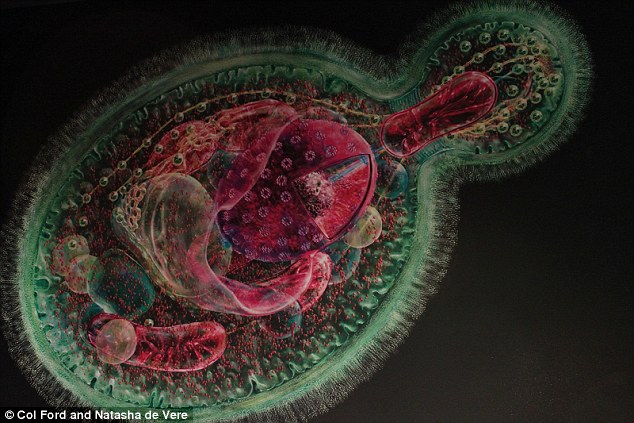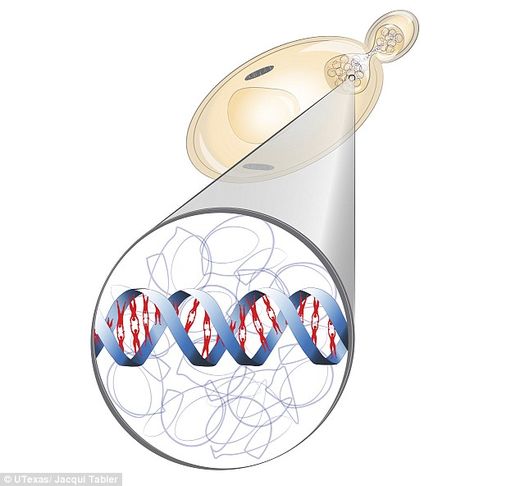
© www.dailymail.co.ukMaking yeast more "human."
A living yeast that is part human and part fungus has been engineered by scientists in a feat that shows how, despite a billion years of evolution separating humans from yeast,
the two species share hundreds of genes in common.
Those genes remain, in part, from the last common ancestor of humans and yeast.
"Cells use a common set of parts and those parts, even after a billion years of independent evolution, are swappable," Edward Marcotte, a professor at The University of Texas at Austin, said in a press release.

© www.dailymail.co.ukUniversity of Texas creates fungal strain out of human and yeast DNA.
"It's a beautiful demonstration of the
common heritage of all living things — to be able to take DNA from a human and replace the matching DNA in a yeast cell and have it successfully support the life of the cell."
That's just what Marcotte and his colleagues did, as they describe in their study published in the journal
Science. Although yeast (such as the Baker's yeast that might be in your refrigerator now) consists of a single cell and humans have trillions of cells organized into complex systems, multiple genes are shared between the two.
Of those, about 450 are critical for yeast's survival, so the researchers removed the yeast version of each one and replaced it with the human version and waited to see whether the yeast would die.
They wound up creating hundreds of new strains of yeast, each with a single human gene. About half of these resulted in an organism that could survive and reproduce.While this might sound like an eerie Frankenstein-like experiment,
the goal is to produce a new way of researching human genetic diseases caused by mutations.It's actually cutting edge research, since the technique could help to reduce or even eliminate testing on live animals.
Another benefit is that the testing could lead to treatments designed for a particular individual. For example, researchers might
insert precise versions of a human gene mutation into yeast and then expose the yeast to different drugs to test new therapies. As a result, the treatments could be tailored to a person's precise genetic mutation.A similar technique could be used to test treatments for other animals too, such as dogs and cats.
"We could find out if one of the standard treatments would work on your particular version of the gene or if maybe another drug would be even better," explained co-author Claus Wilke.
Multiple genes might also be able to be inserted at once into yeast, permitting researchers to examine more complete systems as opposed to just a single mutated gene.
"This work is basically showing that you can take a fuel injector from a tractor and swap it for a fuel injector in your Toyota and it will still work, more or less, because they're both fuel injectors," Marcotte said.
The old body as machine metaphor never seems to go out of date even when it has been proven radically inadequate.